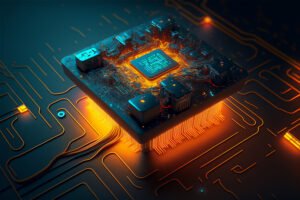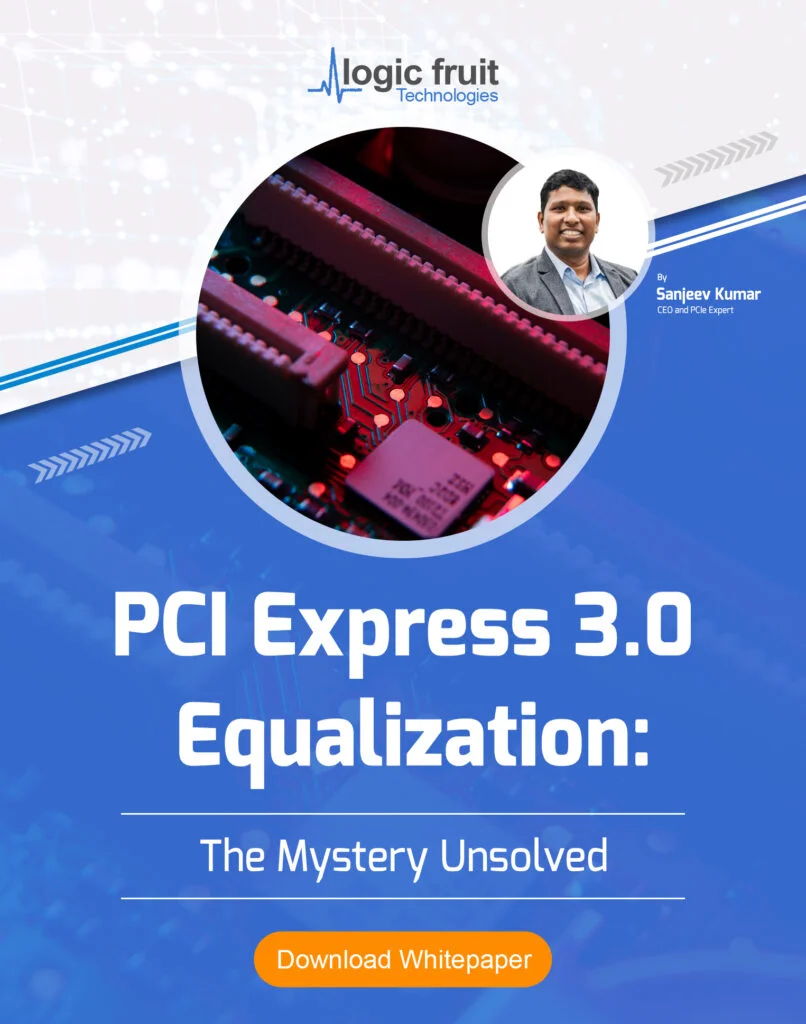A new era of wireless communication has begun with the introduction of 5G technology, which promises incredible data rates, low latency, and widespread device connectivity. These fascinating developments do, however, provide considerable implementation issues.
Massive data rates, real-time application support, and the use of sophisticated technologies like massive MIMO and beamforming are all necessary for 5G. Field-Programmable Gate Arrays (FPGAs) have become a key element driving innovation in 5G networks as a solution to these problems.
Compared to conventional hardware solutions like ASICs and CPUs, FPGAs have special advantages. Because of their programmability, they are flexible and adaptable and may be rearranged to meet the unique needs of 5G infrastructure. They are excellent for jobs requiring significant computational power because of their superior parallel processing and real-time capabilities.
In this article, we explore the varied functions that FPGAs play in 5G technology. We investigate their uses in radio access networks (RAN) and baseband processing.
Challenges in Implementing 5G Technology
The transition to 5G technology brings with it a host of technical and logistical challenges that need to be addressed for its successful implementation. Some of the key challenges include:
Higher Data Rates and Bandwidth:
In comparison to its predecessors, 5G aspires to deliver much higher data speeds, necessitating more capacity. Network operators must set up a dense network of tiny cells and use cutting-edge modulation techniques to do this. However, this poses difficulties for backhaul infrastructure, interference management, and network design.
Millimeter Wave Spectrum Utilization:
To accommodate increased data rates, 5G uses higher frequency bands, including millimeter waves. These high-frequency waves can be attenuated by objects like trees and buildings because of their shorter transmission distances. It takes sophisticated beamforming and MIMO algorithms, as well as improved antenna designs, to overcome these obstacles.
Massive MIMO and Beamforming:
Multiple-Input A key component of 5G is multiple-output (MIMO) technology, which allows for the simultaneous transmission of several data streams. To increase capacity and coverage, massive MIMO employs a high number of antennas at the transmitter and receiver. Massive MIMO and beamforming implementation, however, necessitate advanced signal processing techniques and cooperation between base stations.
Latency Requirements:
In order to support real-time applications like augmented reality, virtual reality, and driverless vehicles, 5G seeks to achieve extremely low latency. Optimizing network protocols, slashing processing times, and ensuring dependable device connectivity all become more difficult as latency is reduced.
Backward Compatibility:
Ensuring perfect backward compatibility is crucial for a smooth transition as 5G networks are deployed alongside current 4G LTE networks. This necessitates the compatibility of many generations of networks and devices, which can be a challenging process.
Network Security and Privacy:
Higher data volumes and a greater number of linked devices make 5G networks more vulnerable to cybersecurity threats. To secure users and vital infrastructure, it is essential to ensure strong security protocols and data privacy safeguards.
Infrastructure and Cost:
It costs a lot of money to deploy 5G infrastructure, including base stations and tiny cells. Smaller cell densification in networks creates additional difficulties in finding suitable places, securing licenses, and controlling power usage.
Regulatory and Spectrum Management:
The success of 5G depends on effective spectrum allocation, hence regulatory bodies must make sure there are enough spectrum resources accessible. Coordination and control of the spectrum among many operators and technologies can be challenging.
Energy Efficiency:
Massive MIMO and the higher data speeds of 5G require more power to operate. To reduce the negative effects on the environment and operational expenses, energy-efficient solutions are crucial.
Global Standardization:
International 5G standard convergence is essential for interoperability and deployment that is both affordable and efficient. When different regions adopt different standards, it might result in fragmented ecosystems and constrained roaming.
FPGA in 5G Baseband Processing
In 5G communication systems, baseband processing is a critical component responsible for the modulation and demodulation of signals, as well as other key tasks such as channel coding, error correction, and filtering. FPGA (Field-Programmable Gate Array) technology plays a vital role in handling these complex and computationally intensive tasks efficiently and effectively. In this section, we will explore how FPGAs are utilized in 5G baseband processing and the advantages they offer.
1. Signal Modulation and Demodulation:
- Modulation: 5G uses advanced modulation schemes such as Quadrature Amplitude Modulation (QAM) and Orthogonal Frequency Division Multiplexing (OFDM) to achieve high data rates. FPGA’s parallel processing capabilities are well-suited for implementing these modulation schemes.
- Demodulation: On the receiver side, FPGAs can efficiently process and demodulate the incoming signals, extracting the transmitted data with low latency.
2. Massive MIMO Implementation:
- Massive Multiple-Input, Multiple-Output (MIMO) is a key technology in 5G that involves using a large number of antennas at both the transmitter and receiver to enhance data rates and network capacity.
- FPGAs can handle the massive parallel processing required for MIMO systems, ensuring real-time processing of multiple data streams simultaneously.
3. Beamforming Techniques:
- Beamforming is a critical aspect of 5G networks, allowing targeted transmission and reception of signals in specific directions, thus improving signal quality and reducing interference.
- FPGAs can efficiently implement beamforming algorithms and adaptively adjust beam patterns based on changing channel conditions.
4. Channel Coding and Error Correction:
- 5G employs advanced error correction codes, such as Low-Density Parity-Check (LDPC) codes and Polar codes, to ensure reliable data transmission.
- FPGA’s parallel processing capabilities enable efficient implementation of these complex coding schemes, reducing latency and enhancing overall system performance.
5. Flexibility and Adaptability:
- One of the significant advantages of using FPGAs in baseband processing is their programmability and reconfigurability. As the 5G standard evolves and new features are introduced, FPGA-based systems can be easily updated and adapted to meet the changing requirements.
- This flexibility is particularly valuable during the early stages of 5G deployment when the standard is still evolving, allowing for quick iterations and improvements.
6. Power Efficiency:
- FPGA devices can be optimized to perform specific baseband processing tasks efficiently, resulting in reduced power consumption compared to traditional general-purpose processors.
- Power efficiency is crucial for 5G base stations and user equipment, especially in scenarios where energy conservation is a priority.
7. Lower Latency:
- The low latency offered by FPGAs is advantageous for real-time applications in 5G, such as augmented reality, virtual reality, and autonomous vehicles.
- FPGA-based baseband processing can help minimize the end-to-end latency in the communication chain, meeting the stringent latency requirements of certain applications.
FPGA for 5G Radio Access Network (RAN)
The Radio Access Network (RAN) is a critical component of 5G technology, responsible for connecting user devices to the core network and enabling seamless communication. FPGA (Field-Programmable Gate Arrays) plays a crucial role in enhancing the performance and efficiency of the 5G RAN. In this section, we will explore the importance of FPGA in the 5G RAN and how it addresses key challenges faced in this domain.
A. The Importance of FPGA in the 5G RAN
Flexibility and Programmability: The versatility of FPGA is one of its distinguishing qualities. FPGAs, as opposed to fixed-function ASICs, can be modified and programmed to support a variety of functionalities needed by the 5G RAN. FPGA’s reprogrammability enables quick updates and improvements without replacing hardware as 5G develops and adds new features.
Low Latency: To support real-time applications like augmented reality, virtual reality, and driverless vehicles, 5G requires extremely low latency. Because of their capabilities for parallel processing and hardware-level optimization, FPGAs reduce latency, which enhances user experience.
High Data Throughput: FPGAs are perfect for handling the enormous data flow needed in the 5G RAN because they can process data in parallel. They provide the enhanced mobile broadband (eMBB) functionality of 5G by effectively managing the high-speed data streams from numerous users and devices.
B. FPGA Applications in the 5G RAN
Baseband Processing: The baseband processing of 5G signals, which includes difficult modulation and demodulation operations, uses FPGA. Data must be converted between digital and analog formats during baseband processing in order to be ready for wireless transmission.
Massive MIMO Implementation: Multiple-Input MIMO technology, which enables the simultaneous transmission and reception of multiple data streams, is a key component of 5G RAN. Massive MIMO systems, which use numerous antennas to increase capacity and coverage, are well suited for implementation using FPGA’s parallel processing capabilities.
Beamforming Techniques: Beamforming is essential for focusing the radio signal on particular user devices and boosting the network’s overall effectiveness. Beamforming techniques can be effectively implemented using FPGA, dynamically altering beam patterns according on user locations and network conditions.
C. Dynamic Spectrum Access and FPGA’s Role
Spectrum Sharing: A wide variety of frequency bands, including licensed, unlicensed, and shared spectrum, will be used by 5G. The effective distribution of the spectrum’s available resources is made possible via dynamic spectrum access (DSA). The rapid adaption of spectrum access protocols and algorithms in response to changing requirements is made possible by the flexibility of FPGA.
Cognitive Radio: FPGA can be used in cognitive radio systems, where equipment can intelligently detect and opportunistically access accessible frequency bands. Advanced signal processing and machine learning methods, which may be effectively implemented in FPGA, are the foundation of cognitive radio.
D. FPGA-Based Small Cell Deployment
Small Cells in 5G: Low-power, short-range base stations known as small cells increase network capacity and coverage in crowded urban regions or indoor settings. FPGA is a good option for small-cell deployment due to its tiny size and high power efficiency.
Customization for Specific Use Cases: For particular use cases, such as in industrial settings or isolated regions, small cells may be deployed. Small cell functionality can be modified and optimized using FPGA to meet the specific needs of these applications.
Real-world implementations of FPGA in 5G networks:
FPGA (Field-Programmable Gate Array) technology has found widespread applications in various aspects of 5G networks, enabling operators to meet the stringent demands of high data rates, low latency, and massive connectivity. Below are some real-world use cases where FPGA has been effectively utilized in 5G networks:
Baseband Processing:
- FPGA plays a crucial role in baseband processing, which involves tasks such as digital signal modulation and demodulation, channel coding, and decoding. Its inherent parallel processing capabilities make it ideal for handling the massive amounts of data required in 5G networks.
- Companies like Ericsson and Nokia have incorporated FPGA-based baseband processing units in their 5G base stations to efficiently handle complex signal processing tasks.
Massive MIMO (Multiple-Input Multiple-Output):
- Massive MIMO is a key technology in 5G that utilizes a large number of antennas to enhance spectral efficiency and increase capacity. FPGAs are used to implement the digital beamforming algorithms required for coherent beamforming, where signals from multiple antennas are combined to form a focused beam.
- FPGAs provide the flexibility to adapt beamforming patterns in real time, improving the overall performance of the system.
Dynamic Spectrum Access:
- In 5G networks, dynamic spectrum access enables the efficient utilization of available frequency bands. FPGA-based cognitive radio solutions have been deployed to monitor and detect spectrum availability, enabling the network to dynamically allocate resources based on real-time demand. This enhances spectrum efficiency and allows for opportunistic use of underutilized bands.
Virtualized Radio Access Network (vRAN):
- Virtualization is a key aspect of 5G networks, and vRAN is one of its implementations. FPGAs are used in vRAN architectures to implement various baseband processing functions and network protocol functions.
- The programmable nature of FPGAs enables easy upgrades and reconfigurations, facilitating the virtualization of radio network functions effectively.
Edge Computing:
- 5G networks require low-latency communication for applications like autonomous vehicles, augmented reality, and industrial automation. FPGA-based edge servers are used to perform real-time data processing and analytics at the edge of the network, reducing the latency and enhancing the overall user experience.
Network Function Virtualization (NFV):
- NFV is an essential component of 5G core networks, enabling flexible and scalable deployment of network functions. FPGAs are used to accelerate NFV workloads, such as virtualized firewalls, encryption, and deep packet inspection. This improves the overall performance and efficiency of the core network.
Small Cell Deployment:
- To improve coverage and capacity in dense urban areas, 5G networks rely on small cells. FPGA-based small cell solutions offer a cost-effective and power-efficient way to deploy and manage these small cells, allowing for seamless integration into the overall network architecture.
Conclusion:
In the context of 5G Radio Access Networks (RAN), Field-Programmable Gate Arrays (FPGAs) have become an essential technology. They are a must for meeting the demands of 5G due to their exceptional combination of flexibility, low latency, and high data throughput. FPGA is crucial in improving the performance and efficiency of 5G networks by enabling efficient baseband processing, implementing Massive MIMO, and supporting beamforming techniques.
Beyond the limitations of the conventional RAN, FPGA’s adaptability allows for the deployment of tiny cells, supports dynamic spectrum access, and caters to a variety of use cases while maintaining smooth connectivity in a variety of settings.
The programmability and reconfigurability of FPGAs make it a promising contender for addressing the changing requirements of future wireless communication systems as we move into the realm of technologies beyond 5G. FPGA is anticipated to continue playing a crucial role in reshaping the wireless communication network environment and releasing the full potential of 5G and beyond with continued research and development.


![What is FPGA Introduction to FPGA Basics [2023] computer-chip-dark-background-with-word-intel-it](https://fpgainsights.com/wp-content/uploads/2023/06/computer-chip-dark-background-with-word-intel-it-300x171.jpg)










3 thoughts on “The Role of FPGA in 5G Technology and Beyond”